New PBTS1C Portable Baratron® Transfer Standard
Overview
PBTS1C is a portable single-channel high accuracy pressure standard with a pressure measurement range of 10-5 to 25000 Torr for real-time in situ pressure verification applications.
The PBTS1C is suitable for use in the calibration lab, production floor, or cleanroom environment. The system includes an AA06A Baratron® Capacitance Manometer pressure sensor which acts as the pressure standard and a 670C power supply and display with a signal conditioner all housed in a rugged wheeled cart with an extendable handle for easy maneuvering. The cart itself includes a secure drawer to store the pressure standard and associated 13 foot interconnecting cable.
The manometer is temperature-controlled at 45°C to maintain stability and high accuracy. The front face of the cart is angled upward to allow for easy viewing of the digital LCD readout.
- Wide pressure range (10-5 to 25,000 Torr)
- Wetted materials (Inconel®, Incoloy® alloy, stainless steel)
- NIST traceable calibration
- User-friendly interface (12 user options, angled LCD)
- RS232 connectivity
- Portable design with integrated UPS
Products
Configuration Options
The following options are available for the PBTS1C Portable Baratron® Transfer Standard
Ordering Code Example: PBTS1C01UB2
| Configuration Option | Option Code |
|---|---|
| PBTS1C Portable Baratron® Transfer Standard | PBTS1C |
Ranges | |
| 0.1 mmHg | 0.1 |
| 1 | 1 |
| 10 | 11 |
| 100 | 12 |
| 1000 | 13 |
| 5000 | 53 |
| 10000 | 14 |
| 15000 | RB |
| 20000 | 24 |
| 25000 | RC |
Input Power | |
| Standard USA & Canada input power 110 VAC, 60 Hz | U |
| 220 VAC, 50 Hz | F |
| 100 VAC, 50/60 Hz | J |
Accuracy | |
| ±0.08% of Reading | B |
| ±0.05% of Reading (1, 10, 100, 1000 mmHg models only) | A |
Interface | |
| RS-232 (standard) | 2 |
Features
Key Features:
- Accurately measures diverse pressures from low to high vacuum
- Ensures long-lasting performance and corrosion resistance
- Ensures confident, accurate pressure readings traceable to national standards
- Facilitates simplified operation with clear display
- Enables seamless integration for efficient data collection and analysis
- Allows for convenient power backup, transport, and setup in various locations
A typical process pressure set point verification set up.
The cart’s pressure standard is removed from its storage drawer and placed near the process tool’s manometer port. This is facilitated by using a combination isolation valve such as MKS’ IDA™ In Situ Diagnostic Access Isolation Valve. When the pressure standard is connected to the isolation valve’s access port, it can be used to verify the accuracy of the gauge and check the system’s set point pressure.
Frequently Asked Questions
- AnswerThe PBTS1C is a high-accuracy portable pressure measurement device designed for versatile use in laboratories and production environments. It provides precise pressure readings across a wide range of pressures, making it an essential tool for various applications.
- AnswerThe PBTS1C can measure pressures from 10⁻⁵ Torr to 25,000 Torr, allowing for flexibility in different measurement scenarios.
- AnswerYou can choose between two accuracy levels: ±0.08% or ±0.05% of reading, depending on your specific measurement needs.
- AnswerThe built-in Uninterruptible Power Supply (UPS) allows the PBTS1C to operate without warm-up delays for up to 60 minutes, ensuring that you can start measuring immediately when needed.
- AnswerYes! The PBTS1C features a wheeled cart with an extendable handle, making it easy to move around your facility or between locations.
- AnswerAbsolutely! The PBTS1C is designed to minimize downtime by allowing you to perform in situ verifications without needing to remove existing process gauges.
- AnswerThe wetted surfaces of the PBTS1C are made from corrosion-resistant Inconel® and stainless steel, ensuring compatibility with a wide range of gases and durability over time.
- AnswerThe device offers NIST traceability, which helps you meet ISO9000 and other regulatory requirements easily.
- AnswerAvailable accessories include isolation valves for lower pressure ranges, bellows adapters for flexible connections, and IDA™ Valves for simplified access to process chambers.
- AnswerThe PBTS1C operates effectively within a temperature range of 15° to 40°C.
- AnswerCustomization options include selecting your ideal pressure range, preferred input power configuration, and interface options (RS-232).
- AnswerFor more details or to make a purchase, please visit our website here or contact our sales team directly. If you have any other questions or need further assistance, feel free to reach out!
-
What is the difference between the ±0.08% and ±0.05% accuracy options?
- AnswerThe ±0.08% accuracy option provides a more economical solution, while the ±0.05% accuracy option offers the highest level of precision for the most demanding applications.
- AnswerThe built-in UPS provides up to 60 minutes of continuous operation, ensuring uninterrupted measurements even during power outages.
- AnswerYes, the PBTS1C features corrosion-resistant materials such as Inconel® and stainless steel, making it suitable for use with a wide range of gases.
-
Answer
The PBTS1C is suitable for a wide range of industries, including: semiconductor manufacturing, pharmaceutical production, aerospace and defense , and research and development.
- AnswerYes, the PBTS1C comes with a standard manufacturer's warranty. Please refer to the full specifications for details.
- AnswerContact our customer support team by phone or email for assistance with any technical questions or issues.
- AnswerThe PBTS1C features Inconel® and stainless steel wetted surfaces, making it compatible with a wide variety of gases.
-
What is the display visibility like in different environments?
- AnswerThe 15-degree tilt stand ensures optimal visibility in any setting, whether in a lab or on the production floor.
- AnswerNo maintenance is required but it is recommended that the AA06A manometer be calibrated on a yearly basis at one of our many MKS Service Centers.
- AnswerYes, with options for RS-232 interface, the PBTS1C can be easily integrated into various setups.
-
How does the PBTS1C ensure accuracy across a wide range of pressures?
- AnswerThe PBTS1C combines a high-performance AA06A Baratron® pressure sensor with advanced signal conditioning to deliver premium accuracy across its full range of pressures.
- Answer In comparison to previous PTBS1B, the performance specifications have not changed. We have simply redesigned the enclosure that houses the manometer and the readout/power supply. But we did add a longer interconnect cable between the AA06A and the 670C (13ft now vs 10ft). Plus, the 5in wheels are antistatic and cleanroom suitable and their larger size makes it easier to move the cart across the facility floor.
Resources
Literature
- PBTS1C Portable Baratron® Transfer Standard (1.9 MB, PDF)
Drawings & CADs
- PBTS1C Dimensional Drawing (248.9 kB, PDF)

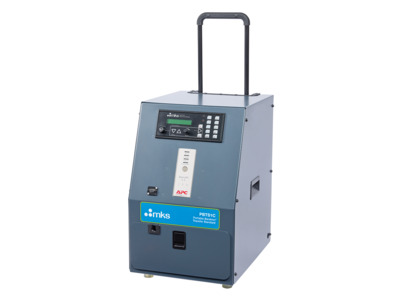
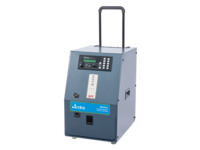
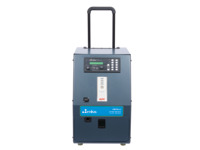


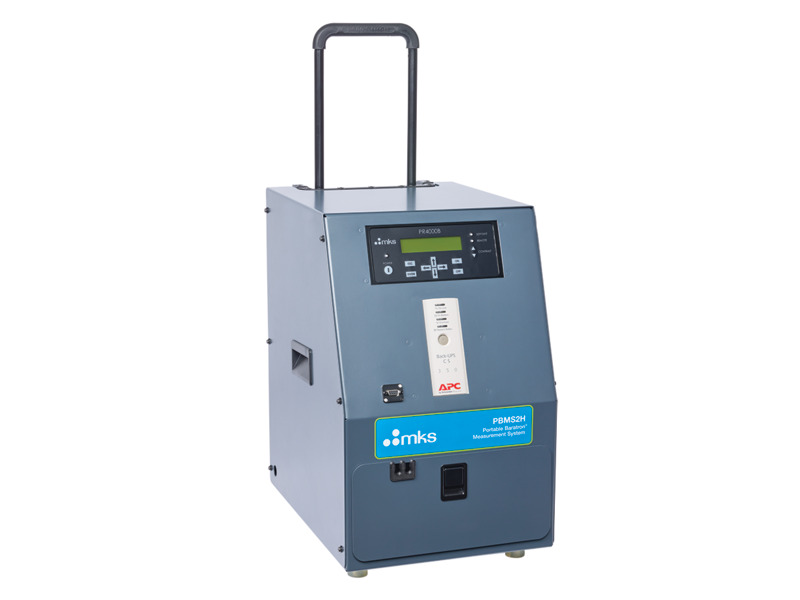
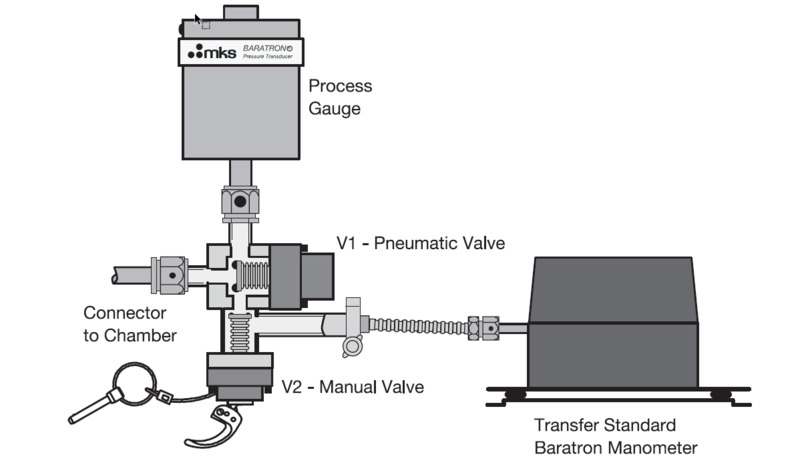
 Ultra-High Velocity
Ultra-High Velocity